Rusty red vistas are a dime a dozen throughout the Flinders Ranges but it takes a genuine off-roader to get a look at the best of them.
With SUVs invading the roadways in plague proportions, a shrinking proportion of them are endowed with any – and I mean any – off-road ability, perhaps only matched in lack of ability by their ignorant drivers.
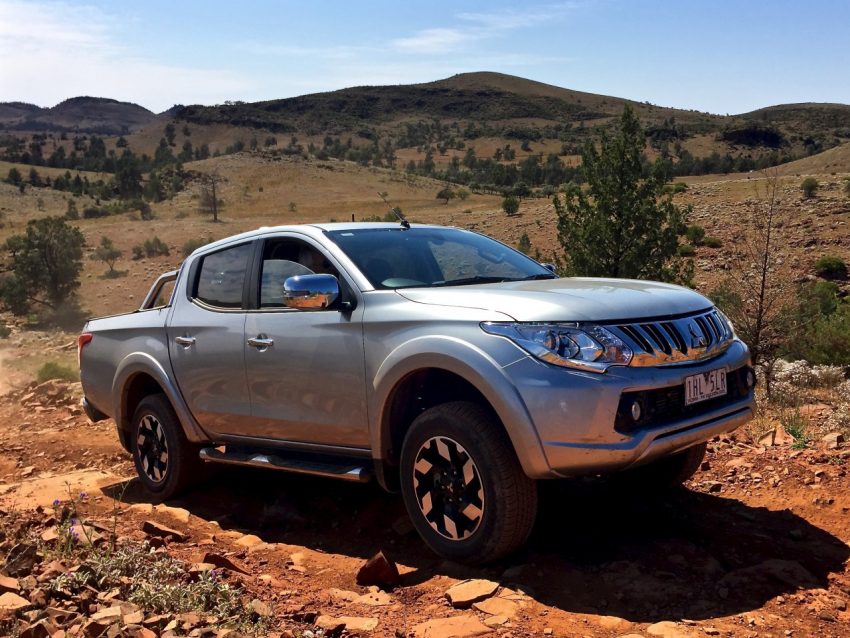
Just my time driving on Goolwa Beach south of Adelaide has supplied enough evidence of people buying these things and then sinking them to the belly in soft sand, so if you do want to get to the best spots in the country then a proper 4WD is a better bet.
Mitsubishi lays claim to a couple of vehicles that can cart kids, tow tools or toys and still get into rough terrain without immediately plunging – literally in some cases – out of its intended depth.
We’re sampling them a few hours drive north of Adelaide, where the terrain flattens out briefly before jutting skyward.
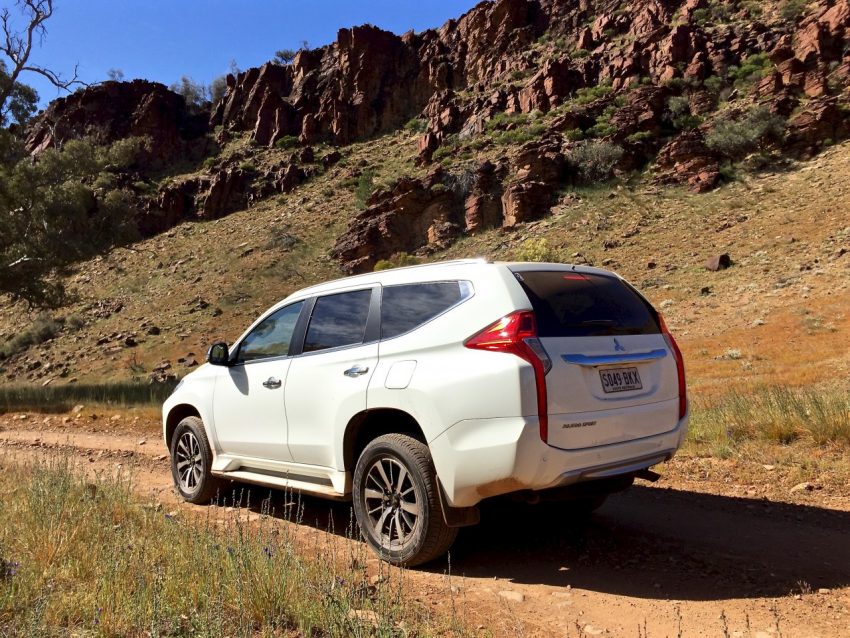
There’s uncommon green tinge for this time of year – the byproduct of above-average downpours for the region – where the Mitsubishi duo of Triton and Pajero Sport are loping along on turbodiesel torque outputs and long-legged gearboxes.
In the case of the ute it’s a six-speed manual or a five-speed auto, but the wagon sports an eight-speed auto that thankfully isn’t prone to bouts of hunting.
The Flinders Ranges rise abruptly from the stony plains, offering a rusty colour palette of geological colours that’s part of the attraction to tourists from around the globe.
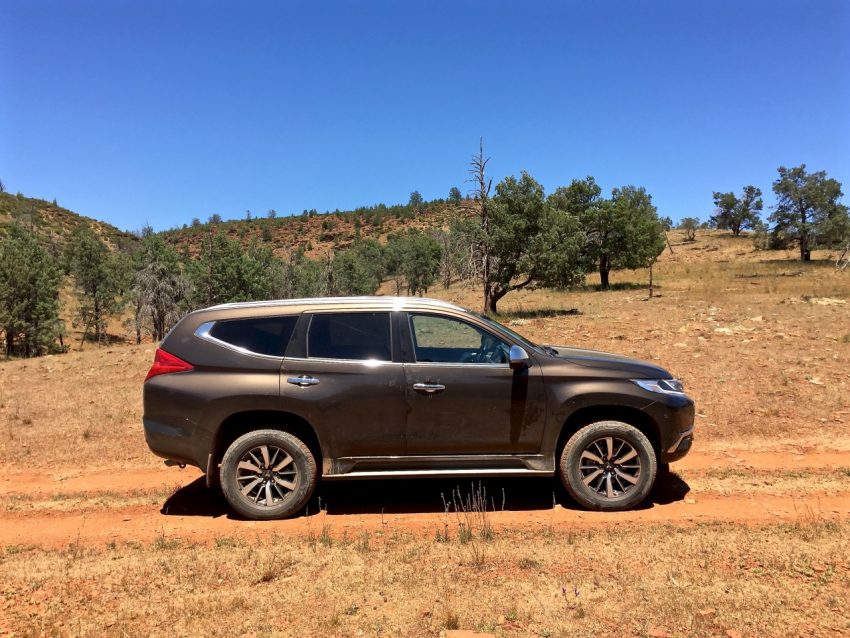
Sealed roads cover the entire route to the heart of the Flinders Ranges, Wilpena Pound, a base from which any number of the area’s attractions can be accessed.
The first of the gaggle of Mitsubishis sampled on the sealed surface run north is a $40,990 GLS manual dual cab, which dealt with the 300km jaunt showing off the load-lugger’s refined in-cabin experience – wind, engine and road noise are all on the low side.
The GLS’ six-speed manual gearbox is consistent with previously-driven examples of the breed, delivering a clean action and a solid shift, although the power plant’s torque spread was enough that it doesn’t demand an excessive number of shifts on the open road.

The top-spec Triton Exceed – a $47,790 proposition prior to on-roads – makes do with a five-speed automatic, which is serviceable without being cutting edge; both variations offer relaxed cruising on the open road.
Both of these off-roaders share the alloy intercooled 2.4-litre with 16 valves with variable intake system and a variable geometry turbocharger to produce 133kW at 3500rpm and peak torque of 430Nm at 2500rpm.
The laboratory-derived fuel economy number of 7.2 l/100km (7.6 for the five-speed auto) for the Triton, rising to 8 for the heavier Pajero Sport despite the use of an eight-speed auto, are highway-biased figures not really applicable to Australian outback driving conditions.
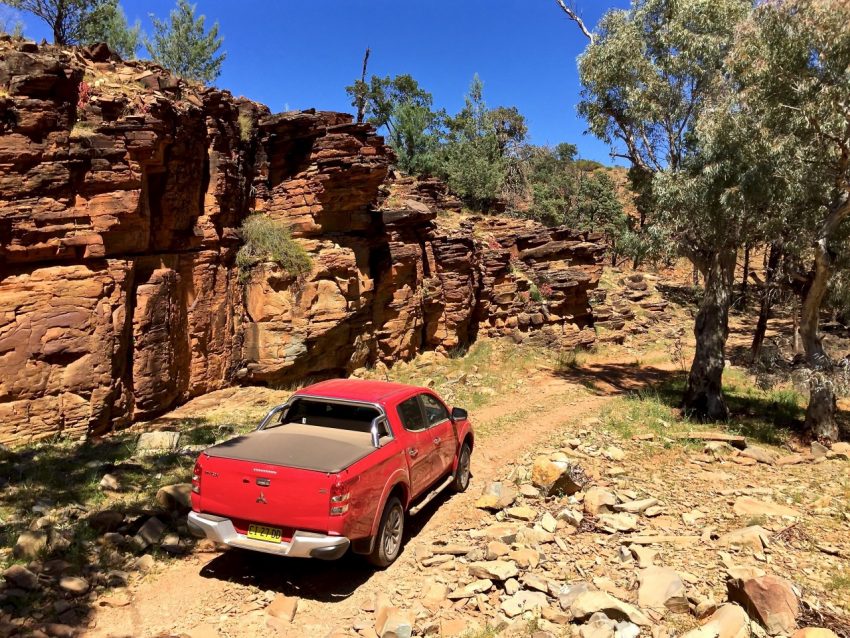
Neither remain in single digits once off the beaten track but it’s the seven-seater wagon’s smaller fuel tank quenching a heavier thirst.
The Pajero Sport retains a five-seater in the fleet-friendly GLX and the price tag is unchanged at $45,000, a well-equipped entry-level model that sits $600 below the entry-level manual 4WD 130kW/380Nm Isuzu MU-X ($2800 beneath the auto variant), $2990 beneath the 147kW/500Nm Holden Colorado 7 / Trailblazer LT and 130kW/450Nm Toyota Fortuner GX, all of which have seven seats.
The mid-spec GLS is also unchanged despite the addition of a third row, starting from $48,500 -less than $1000 up on the entry-level Toyota, Holden and Isuzu 4WDs, but offsets the difference with a features list that includes dual zone climate control, leather trim, auto wipers and headlights, auto-dimming centre mirror and rear differential lock.
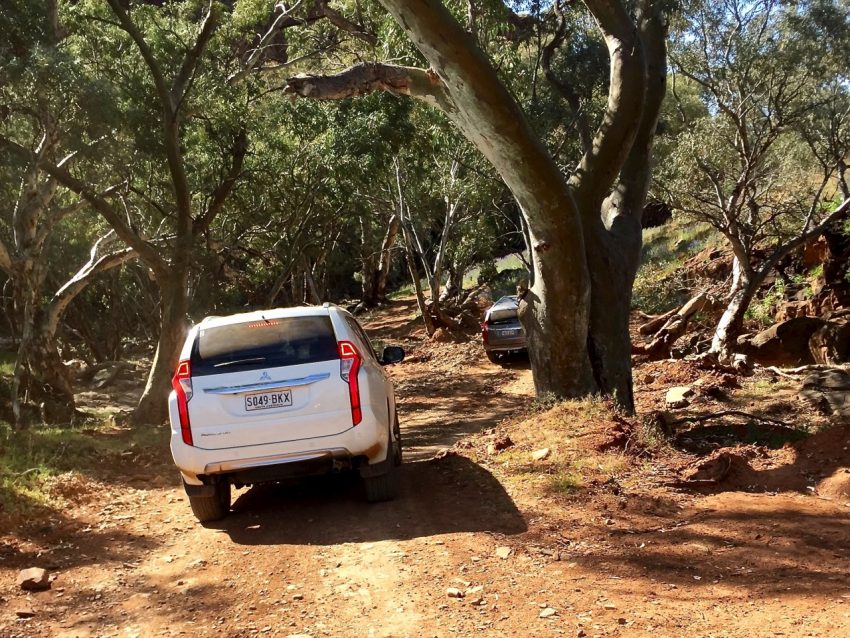
The top-spec Exceed starts from $52,750 – down on the $54,000 Isuzu asks for its LS-T and up on the $51,490 LTZ Holden Trailblazer but the latter can’t match it for features.
Exceed buyers get heating and power adjustment for the front seats, a rear DVD player, eight speakers, multi around view cameras, blind spot monitoring, forward collision warning and braking.
This trio – and the Mitsubishi in particular – all represent outstanding value in the face of the over-priced Ford Everest, which at $54,990 for the base-model doesn’t get in the hunt here, nor does it (as Ford continually tries to convince otherwise) compete against the likes of Prado.
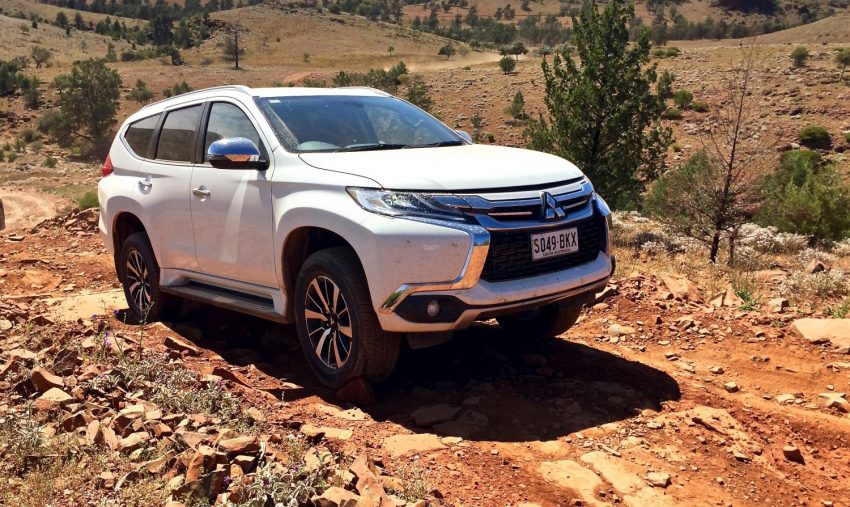
I contemplate the outrageous price tag on the Ford as I travel north on the main road through the Flinders as it dips and weaves through countless creek beds, most still littered with debris from flash-flooding caused by recent rains.
Anyone who camps in a creek bed, rather than next to one, needs to see just how much force can be exerted by a bit of rain.
The ground cover is thick and still bears a solid green tinge with plenty of wild flowers and even more Salvation Jane – Patterson’s Curse to anyone east of Broken Hill – with dust and flies never far away.
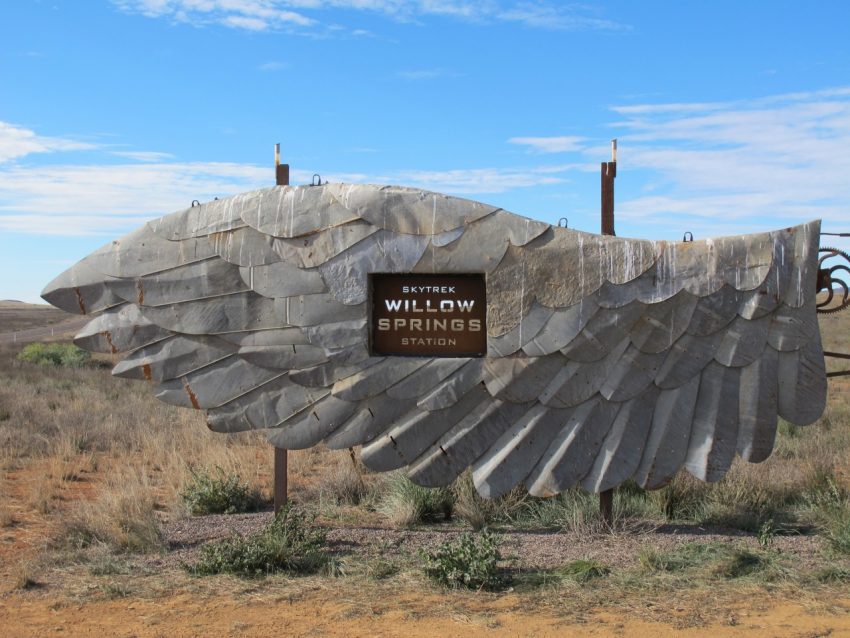
The fuel use rate rises when the road turns to dirt, after a right turn into Willow Springs station, home to the Skytrek 4WD run – mapped out with markers – through the 75,000 acre pastoral lease.
It follows the station’s road network, as well as creeks and fire trails, to take the convoy of Mitsis through the sheep paddocks largely deserted by the wooly residents, some temporarily relocated to the shearing sheds.
Steep climbs littered with loose rocks test the mechanical and electronic traction of both the ute and the seven-seater wagon, which can be varied between rear and four wheel drive, with the centre diff open or locked depending on the severity of the terrain.
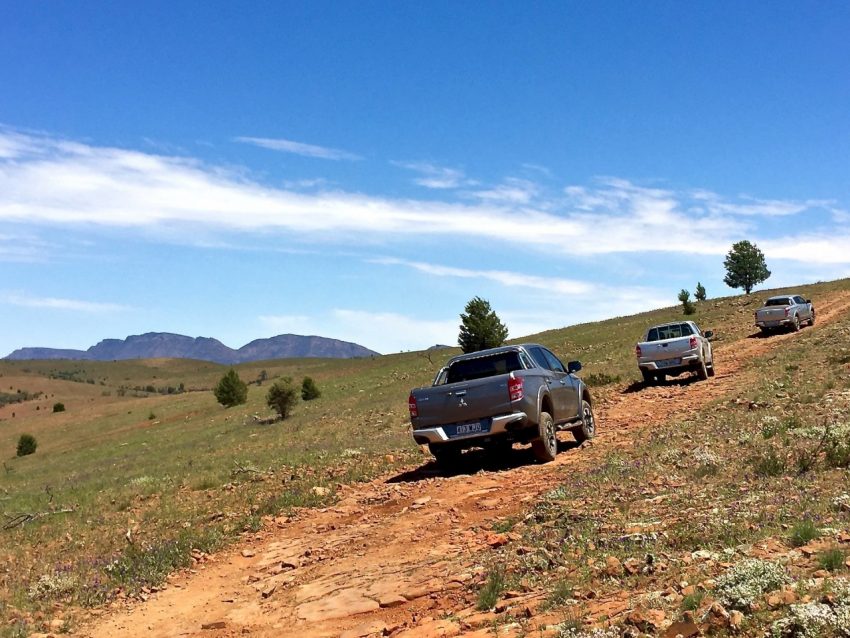
The network of unsealed roads that wind back and forward across the ranges can vary from hard-packed and well-maintained to littered with gravel humps waiting to wake up the stability control, which makes the option of 4WD on more surfaces a reassuring backup for the driver.
Be it a trip across to Parachilna for a feed at the Prairie Hotel, stopping to wet the whistle at the Blinman Pub or stopping in at the Angorichina settlement for a look around the gorges, the road conditions warrant four-wheel drive but the ability to jump on and off bitumen without changing drivetrain set-up is convenient.
Much of the Skytrek trail is completed with it locked in four-high, with the steep sections more comfortably completed in low range, but careful progress in high – with decent clearance and tyres – would suffice.
Reaching the summit and a genuine 360-degree view of the brutally-beautiful surroundings is offered to those making the trek through the property, which also offers overnight accommodation in a variety of cottages and huts, or the shearers’ quarters if that’s more your style.
Views of Wilpena Pound, St Mary Peak and Rawnsley Bluff (among others) litter the skyline, an imposing vista that is difficult to capture on camera ‘pano’ mode on an iPhone gets about two-thirds of the way and runs out of room – but it’s well worth seeing in person.
A steep descent in the manual Triton shows first gear low range is more than adequate to step carefully down the rock-encrusted trail without electronic interference; the Pajero Sport’s eight-speed auto is also good for engine braking and while equipped with hill descent control it doesn’t really need it.
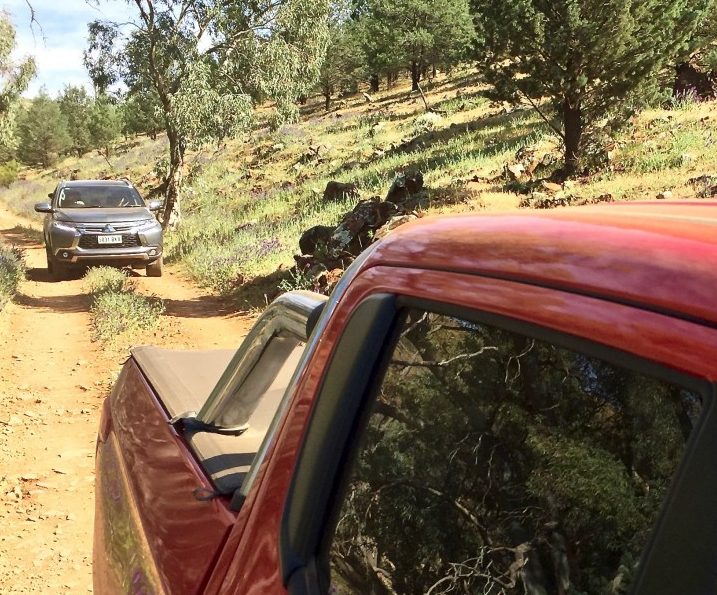
Much of the Skytrek is a ridge-run that presents a postcard over every crest and it also offers an insight into both vehicles.
The Triton workhorse is a far cry from the load-luggers of old and the seven-seater Pajero Sport builds on the Triton’s foundation to deliver a civilised kid-carter that doesn’t run out of ability beyond a wet playing field; handling and steering are on the ponderous side but the payoff is reasonable ride comfort.
The differences in factory-fitted tyres is not a yawning but the Dunlop Grandtreks fitted to the Pajero Sport are inferior to the Bridgestone Duelers wrapped around the alloys of the Triton.
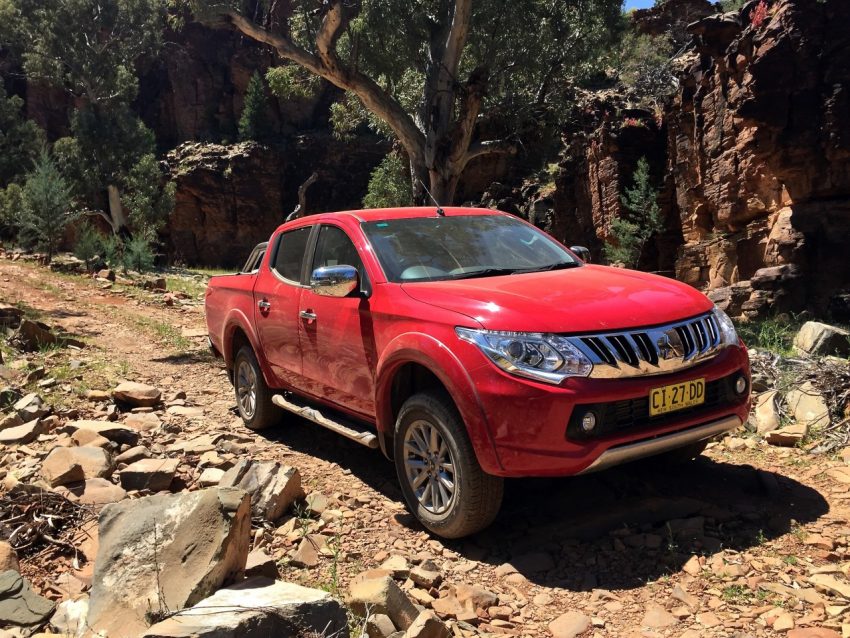
Neither are the duck’s guts for off-roading, nor are they great for bitumen work either, but the Duelers do a better job all round.
That can also be said of the Triton – it’s a good all-rounder, not the most powerful, spacious, strongest for loads, spacious or quietest on the market but it’s in the ballpark for refinement and certainly on price.
It sits at the lower end of a price scale wound up well into the $50K bracket by the Ford Ranger, Mazda BT-50, Volkswagen Amarok and Toyota HiLux in the flagship models, with even the top-spec Isuzu D-Max at $53,000 and the flagship Amarok into near $64,000.
Mitsubishi and Nissan manage to keep the workhorses on the good side of $50,000 but recent experience in both suggests the Triton trumps Navara on points in the end.





GIPHY App Key not set. Please check settings